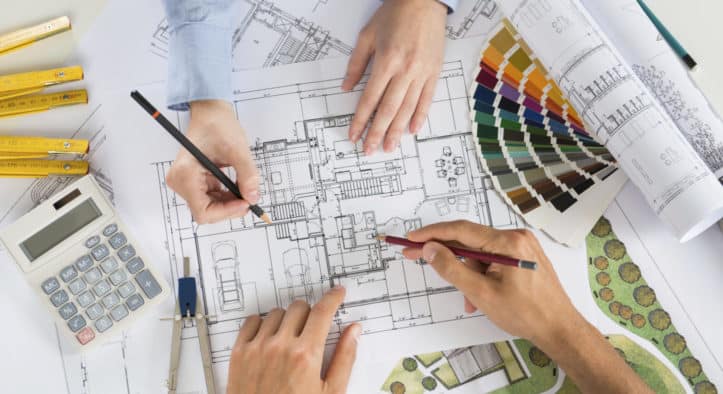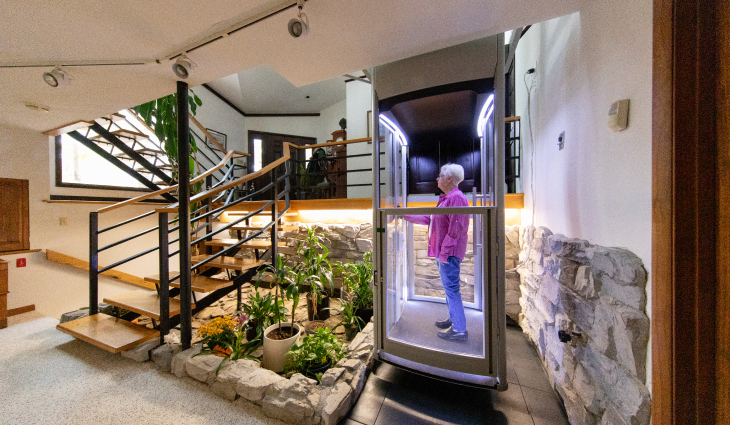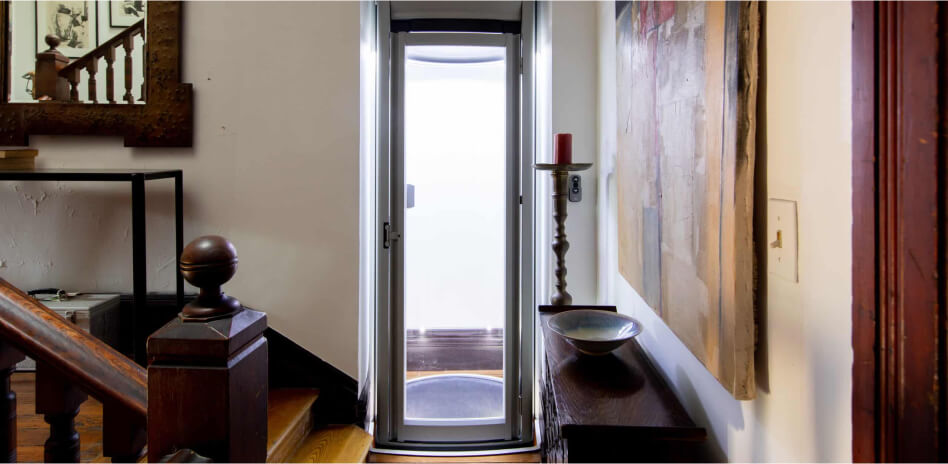The idea behind all elevators is the same: Attach a lifting system to a compartment built into a hoistway. But elevators get much more complicated once you introduce different kinds of lifting mechanisms.
Depending on what’s most important to you – a smooth ride or energy saver, for example – you might best be served by a particular type of elevator and lifting system. Take a look at these different types of residential elevators and decide what features are most important to you.
Contact us today at (301) 251-1658 to discuss a home elevator installation in Maryland, Virginia, Baltimore, or the DC metro area.
Schedule a Consultation Today!
Roped Hydraulic Residential Elevators
Roped hydraulic elevators combine the advantages of hydraulic systems with the ease of roped ones. They’re based around a hydraulic pump that’s connected to a piston and pulley. The piston is supported by a pedestal and connected to the hoistway by a series of brackets.
A pair of steel cables (or “ropes”) are anchored to the floor of the shaft, stretched around the pulley at the top, and then attached to the bottom of the L-shaped sling on which the cab sits. This makes for a smoother ride than many other systems.
Hydraulic elevators are especially great for home use because they don’t necessarily require an adjoining machine closet. While a dedicated space for the machinery is still necessary, we can use pipes for the hydraulic fluid the same way a plumber can run lines throughout your home.
What this means is that, rather than have to find room for an adjoining closet, you can place the supporting machinery wherever is most convenient.
Pneumatic Vacuum Elevators for the Home
The pneumatic vacuum elevator, or PVE, is the newest innovation in elevator design. PVEs are revolutionary because they don’t require cables, chains, pistons, or counterweights, but instead use the hoistway itself as part of the lifting system.
Composed of a tube-shaped cab in a tube-shaped hoistway, the pneumatic vacuum elevator uses parts that fit perfectly together. This is necessary to maintain precise atmospheric pressures above and below the cab. The lifting action occurs when pressure is reduced above the cab, causing it to rise to fill the void.
To descend, a control valve slowly releases pressure, creating a cushion of air beneath the cab. This makes for an energy-conscious elevator since energy is needed almost exclusively to lift the cab and not to lower it.
Winding Drum & Counterweight Chain Drive Home Elevator Systems
Winding drum and counterweight home elevators use the age-old design based on a revolving winch and counterweight. The electric motor winds the cable through the drum, alternately raising and lowering the cab and counterweight. Many homeowners install this type of elevator for two reasons:
First, the drum and motor can be housed at the top or bottom of the hoistway, meaning a machine closet isn’t necessary and the elevator’s footprint is relatively small.
Second, these elevators are cheaper than their roped hydraulic and pneumatic vacuum counterparts. For the lower price, however, you get a rougher and noisier ride. Another downside is that the elevator’s exact stopping point can sometimes vary depending on the elevator’s load, creating uneven exit situations.
Traction Drive Elevator Systems
Traction drive elevator systems are seen in the residential space on rare occasion. They’re much more typical in commercial elevator systems.
Call 301-251-1658 today to discuss a home elevator installation in Maryland, Virginia, Baltimore, or the DC metro area.








